From the West Hartford Archives: Ornamental Iron on Albany Avenue

Audio By Carbonatix
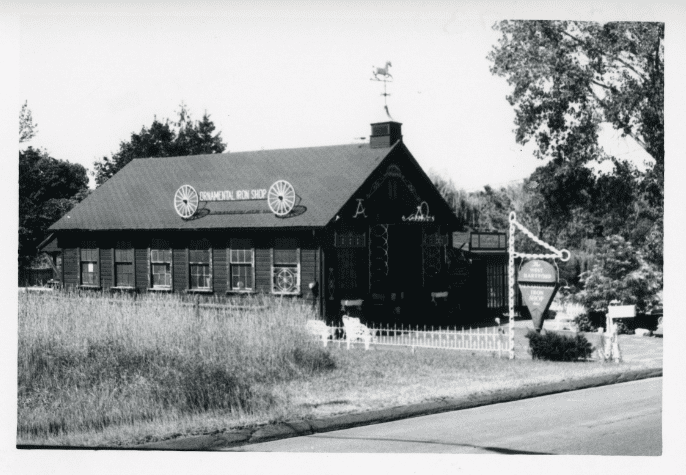
2575 Albany Avenue. Courtesy of Noah Webster House & West Hartford Historical Society
Historian Jeff Murray takes a look into West Hartford’s past to uncover some surprising information, stir up some memories, or reflect on how much life has changed – or hasn’t changed at all. Enjoy this week’s ‘From West Hartford’s Archives’ …
By Jeff Murray
The area just southwest of Bishop’s Corner was historically associated with metalworking, which seems fitting for the Wrought Iron Works still on the site, formerly the West Hartford Ornamental Iron Shop, at 2575 Albany Avenue.
This was the location of Frank H. Strong’s sprawling blacksmith shop when he built up his shop in the fall of 1880, at a time when West Hartford was dotted by 10 others. A few decades earlier, Levi Sedgwick’s shop was established across the street on the north side. Bishops Corner in this era was defined by its blacksmiths, its tobacco farms, and the Goodman tavern and post office a short distance away.
When West Hartford residents first introduced the idea of plaques for historical sites around town as part of the Congregational Church’s 200th anniversary in 1913, Bishop’s Corner was marked specifically for Levi Sedgwick’s blacksmith. Frank Strong’s business on the south side was a continuation of this long-established tradition. Strong also conducted a carriage shop next door, although it was destroyed by fire in 1904. In 1910, he sold the property at Albany Avenue and Flagg Road to Hans Christensen to continue the blacksmith shop. Frank transitioned away from the industry and went into business in the Center working on automobiles, which was becoming immensely popular. From here, the Strong family’s association with Bishops Corner ends, but the Strongs had been quite influential in West Hartford and will be discussed more in a future article.
At the beginning of 1922, the blacksmith shop burned down once again and William Webber, who ran the shop under Hans Christensen, built a new one on a lot owned by Leverett W. Stone, who lived next door at Flagg Road. The women of the North End Community Club helped dedicate the opening in February. It is this building that stands there today, a little over 100 years later.
Stone was a Civil War veteran, having enlisted in 1862 in the Connecticut Volunteers, 14th Regiment at the age of 17. Stone worked at Strong’s for several years and at the age of 78, Stone occasionally helped out in Webber’s new blacksmith shop until his death in 1924. His widow, Rosa, born in West Hartford and 25 years his junior, lived at the Stone house at 38 Flagg Road until her death in 1954. It is truly amazing how short American history can be when a Civil War veteran helped out in the same shop building that still stands today and his widow lived to see the construction of the first shopping plaza at Bishops Corner.
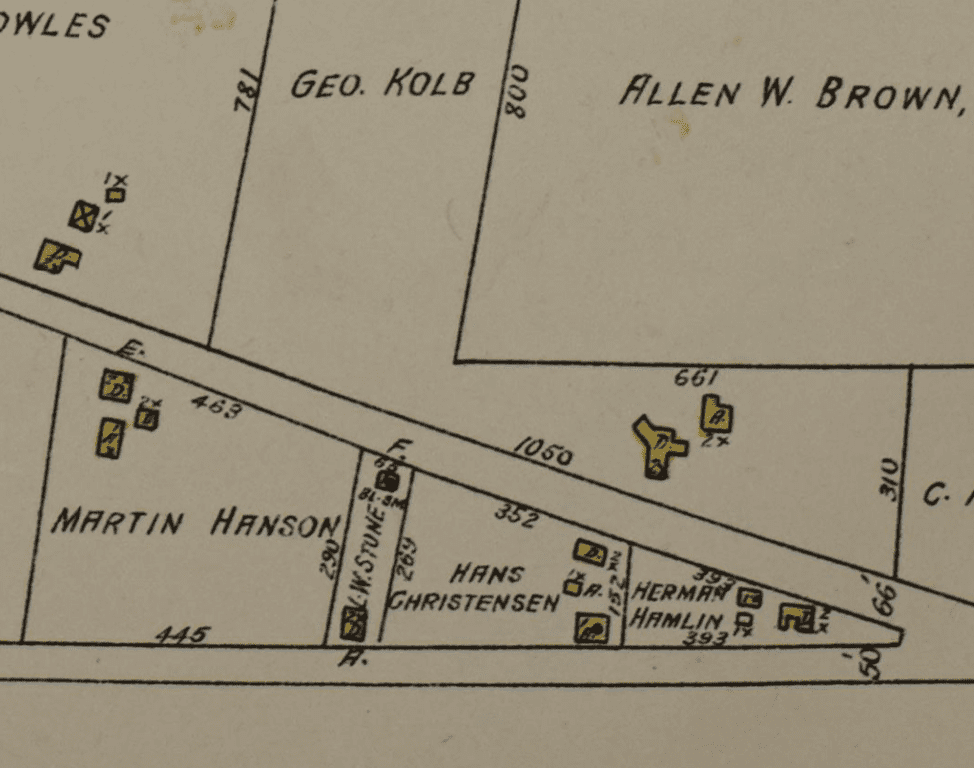
Map from 1923 showing Hans Christensen’s and Stone’s blacksmith shop and residences at Albany Ave and Flagg Road
The idea of the “village blacksmith” continued into the 1920s, even if there were many more of them. Blacksmiths made agricultural tools, like plows, hoes, and shovels necessary for farming. Until automobiles became more widely used, horses remained the primary mode of transportation, with blacksmiths supplying horseshoes and repairing horse tack. Carriage shops were often located nearby to accommodate repairs of horse-drawn carriages and their components. The early blacksmiths also provided household items, like hinges, locks, keys, iron pots and pans, and kitchen utensils, like knives and forks. Housing construction required a constant supply of nails, bolts, and brackets, as well as the tools for carpenters and masons, like hammers and chisels.
It was the growth of industrialization, however, that helped replace the village blacksmith with factories that increasingly took over the production of these goods. Fortunately for iron workers, the demand shifted towards decorative ironwork with the rise of suburban neighborhoods – gates, railings, and garden furniture, as well as other custom pieces.
The West Hartford Ornamental Shop of the 1930s produced wrought iron tables, chairs, fences, fireplace fixtures, and porch railings. Garden shows displayed doorknockers, lanterns, and window grills.
World War II hit the business hard. The demand for metal for war led to shortages of iron and steel for civilian businesses. The U.S. imposed restrictions and rationed materials. Large factories had the capacity to convert their work to support the war effort, but small businesses did not have this same advantage, especially the decorative iron shop.
The proprietor of the shop, Hugh Feeney, couldn’t weather the storm and sold the business in 1945 to Bill Jones, his apprentice who had worked under him in the same shop since 1933. In a write-up in the Courant from 1954, Bill said that because business was extremely bad when he bought it in 1945, “I had to buy the iron on credit and only $50 at a time at first. I had only one employee and no money to spend on advertising. I went out and saw the people I thought might be interested in iron ornaments and it wasn’t long before the shop started to grow.”
In addition to manual outreach, the timing of the purchase was incredibly lucky. The end of World War II brought changes to the decorative ironwork industry as the postwar economic boom and suburban growth, especially in the north end of town, sparked a renewed interest in its products. The odd example of an Avon housewife who found a World War I steel helmet in her attic and had the iron shop convert it into a lampshade in 1954 is perhaps a perfect demonstration of this change in mood. The Ornamental Iron Works also continued to service farm tools and hardware, iron furniture, and restore antiques. Half of the premises was run by his wife, Hope, as a gift shop, selling items from catalogs.
Bill Jones, who lived behind the shop at 38 Flagg Road (the old Stone house), died in 1981 and the shop passed to his son Graham, who owned the business until his retirement in the winter of 2004-2005. That December, the shop closed and was set to be purchased and converted into an orthodontist’s office. The changes prompted an uproar from residents of Flagg Road, as well as the historically-minded across West Hartford. Some residents endorsed the rezoning and office construction as long as it matched the aesthetic of the area and increased the tax base.
In June 2005, the Town Council denied the application and the site was bought by new owners, who continued the iron business under a new name. In 2022 it changed ownership again but continued the tradition as the Iron Shop by Superb Steel. A drive by today shows the culmination of two centuries of blacksmithing in this area. It remains an immensely historical site, even without a town plaque to spell it out.
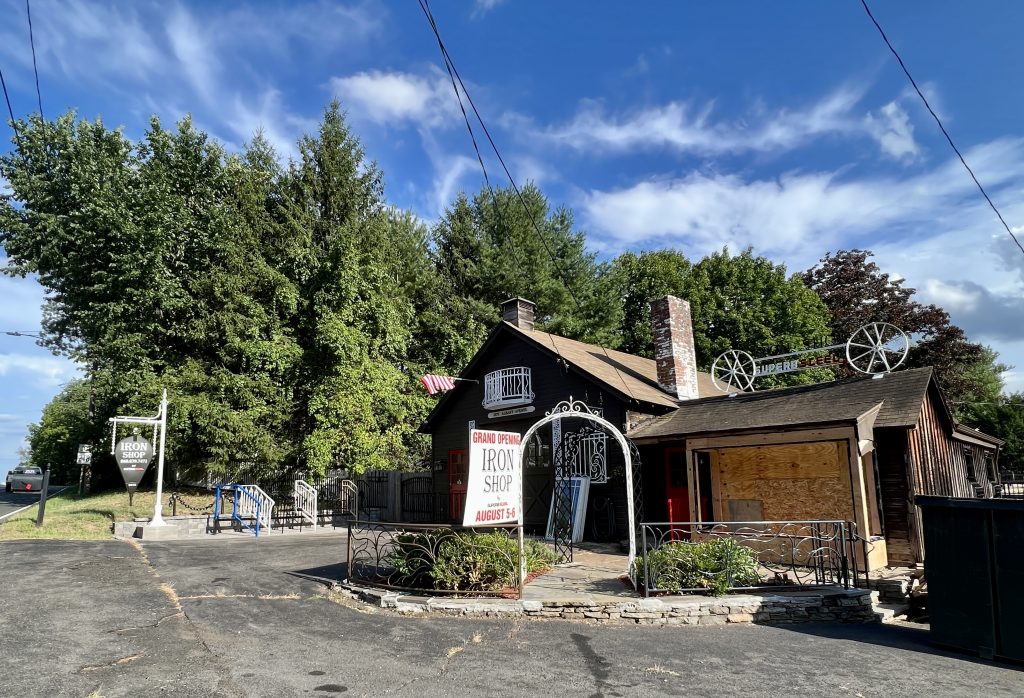
The Iron Shop by Superb Steel opened at 2575 Albany Ave. in August 2022. Photo credit: Ronni Newton (we-ha.com file photo)
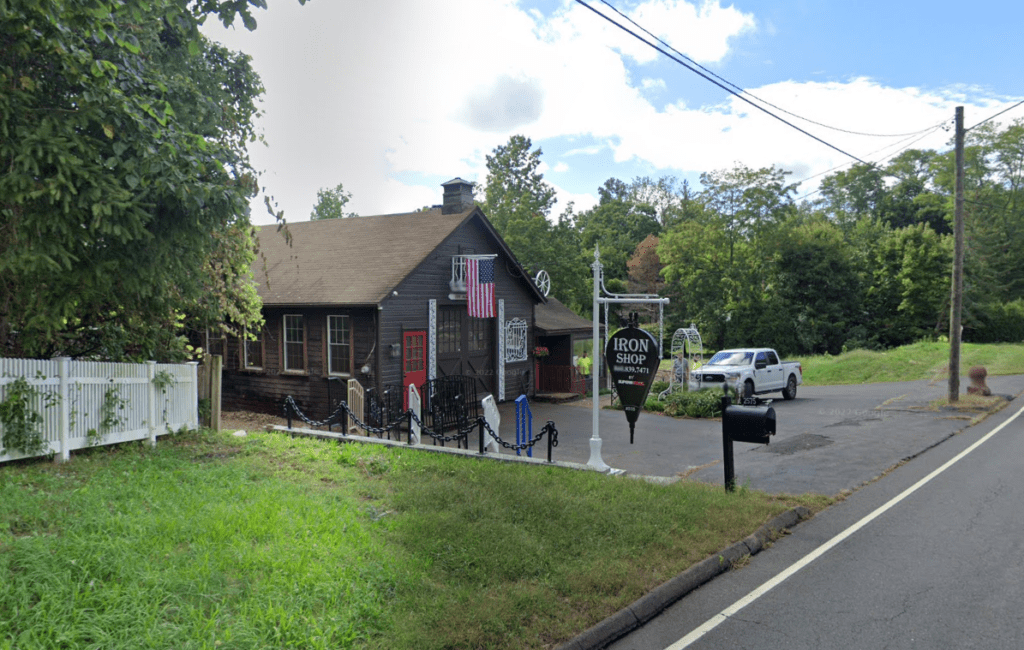
2575 Albany Avenue. Google Street view
Jeff Murray was born and raised in West Hartford and has been involved with the Noah Webster House & West Hartford Historical Society since 2011 when he was a high school student and won the Meyer Prize for his essay on local history. Jeff routinely volunteers as local history researcher uncovering information for numerous museum programs such as the West Hartford House Tour and West Hartford Hauntings. Jeff works as a data analyst at Pratt & Whitney.
Like what you see here? Click here to subscribe to We-Ha’s newsletter so you’ll always be in the know about what’s happening in West Hartford! Click the blue button below to become a supporter of We-Ha.com and our efforts to continue producing quality journalism.


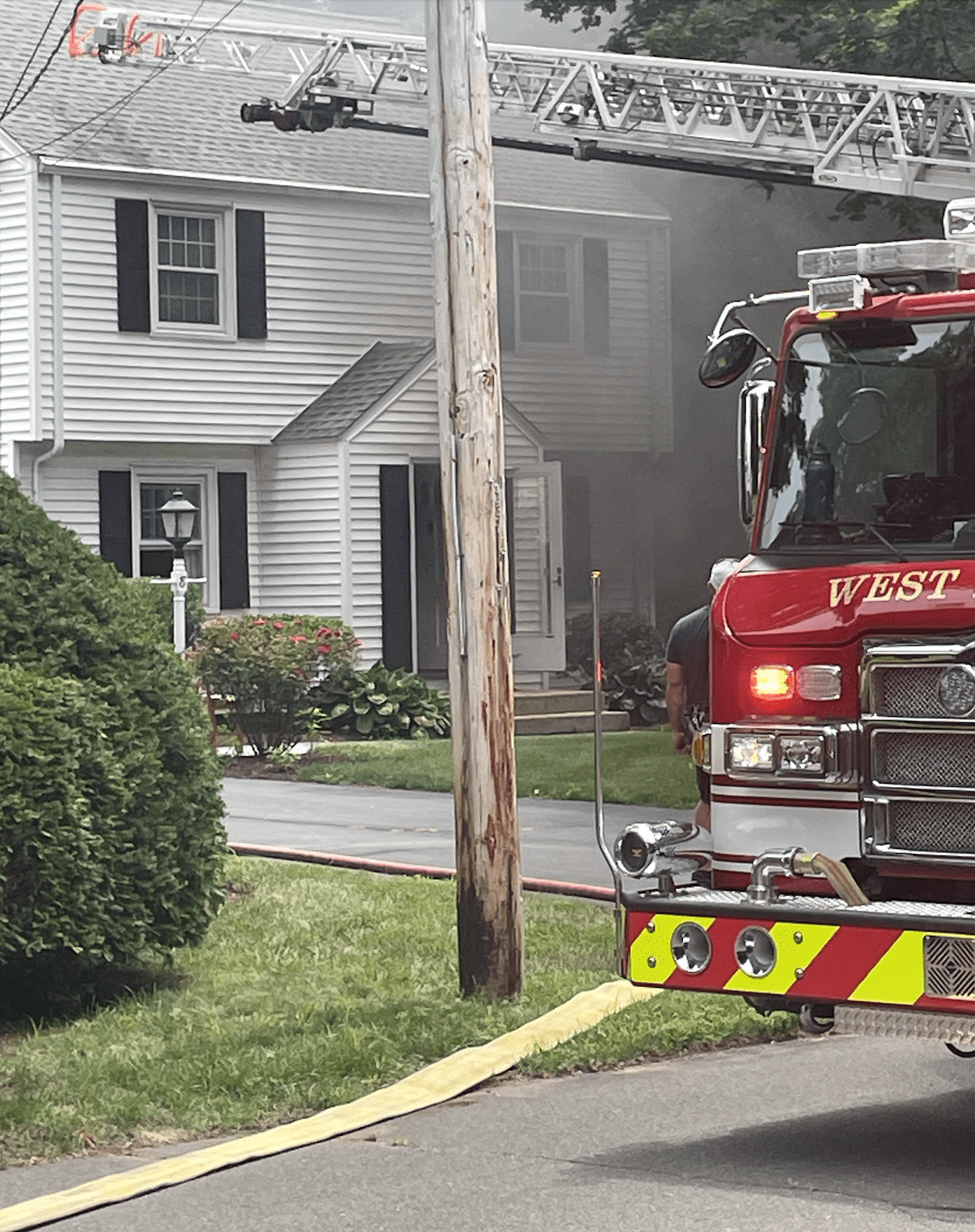

This article on the ironworks around Bishops Corner is fascinating! I grew up on Pioneer Drive and can remember some of these very old somewhat delapidated houses on Flag Rd between Albany. Thanks for the look back!